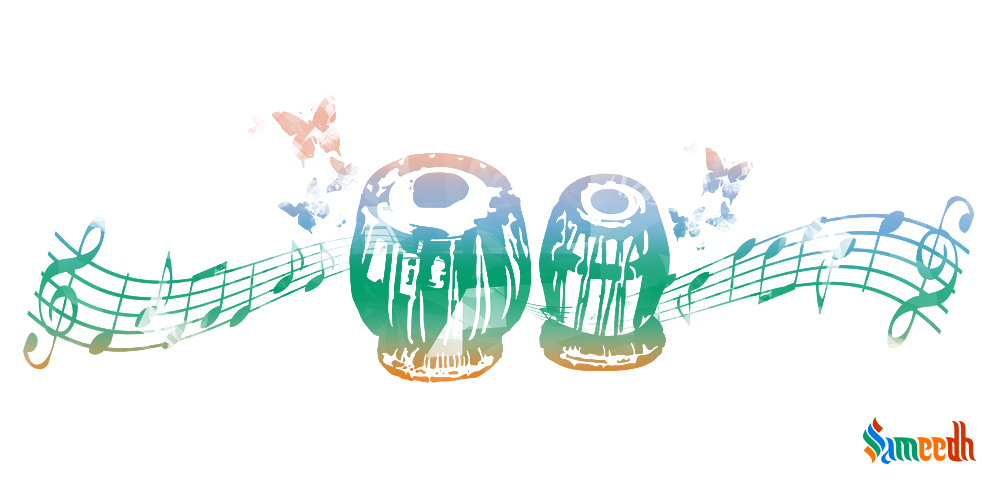What comes to your mind when someone says the word ‘Dhun’? It is a word which has different connotations and that is exactly why it is very confusing.

DEFINITION
If we look up the dictionary for the meaning of this word, you will find the word ‘passion’ listed against it. The other definition that you will come across is that it is a kind of music.
A dhun is a light instrumental piece in Hindustani classical music. Although it may be played in light rags such as Khamaj, it is more freely interpreted and may incorporate foreign notes too. A dhun may be based on a folk tune or even a filmi song. The term dhun must not be confused with the devotional chant only, which is also called dhun by the way.
ORIGIN
From historical accounts it is clear that the power to move people has always been attributed to music; its ecstatic possibilities have been recognised in all cultures and have usually been admitted in practice under particular conditions, sometimes stringent ones. In India, music has been put into the service of religion from earliest times; Vedic hymns stand at the beginning of the record. As the art developed over many centuries into a music of profound melodic and rhythmic intricacy, the discipline of a religious text or the guideline of a story determined the structure.
SIGNIFICANCE
In classical music, dhun is a kind of upgradation of various folk tunes from India by making them fit for the classical stage. The dhun tends to be played in the lighter rags; Mand, Khammaj, and Pahadi are extremely common. Heavy rags such as Darbari Kanada are almost never heard. Furthermore, the treatment of the rags is given extreme latitude. It is very common to play everything mixed or misra.
This usually comprises of very short alaap and simple pastoral tunes. However, being part of classical repertoire, it usually retains extensive expositions and improvisations. A dhun is almost always instrumental. One tends to find only the lighter tals used to accompany the dhun. This is most commonly ‘Kaherava’ of 8 beats or ‘Dadra’ of 6 beats. However, on occasion one may find ‘Dipchandi’, or similar semiclassical rhythms. The instruments commonly used for playing dhuns are Bansuri, Bulbul Tarang, Dilruba, Esraj, Harmonium, Mayuri Vina, Rabab (Kabuli Rabab), Santur, Sarangi, Saringda, Sarod, Shehnai, Sitar, Tanpura, Violin and Tabla.
HISTORICAL PRACTICE
While the singer remains central to the performance of much Indian traditional music, and the virtuosity of a skilful singer rivals that of the instrumentalists. Moreover, an element of improvisation is retained that is vital to the success of a performance. The spontaneous imitation carried on between an instrumentalist and singer, against the insistent rhythmic subtleties of the drums, can be a source of the greatest excitement, which in large measure is because of the faithful adherence to the rigid rules that govern the rendition of ragas—the ancient melodic patterns of Indian music. In the classical repertoire, Dhun is an upgradation of the various folk tunes by making them fit for the classical stage.
Classic devotional music has been in existence in Nepal for more than a thousand years as a part of undivided India. The time period between 11th to 17th century saw an increase in literary activity in Kathmandu. Numerous devotional music, dances, and plays have been found from this era. Thus, the earliest treatise on Malshree dhun a book in Nepalese called ‘Sangit Chandra’. The book was written as an appendix to ‘Natya Shastra’ by the king of Bhaktapur Jagat Jyoti Malla and his minister Vanshamani Ojha. The book elaborates on Bharat Muni’s ‘Natya Shastra’ and Abhinavgupta’s ‘Abhinav Bharti’. This was followed by ‘Gayanlochan’, written during the reign of Jitamitra Malla. ‘Gayanlochan’ focuses more on introduction to rag and raginis, their characteristics, and performance.
To know more about Hinduism, its Vedic belief system, vedic lifestyle practices, etc. or to replenish your requirements of vedic pooja samagri, or to learn vedic practice systems like yoga, pranayam, etc. please visit our website Sameedh.